The Cornell Lab Bird Academy › Discussion Groups › Joy of Birdwatching › Activities: Keeping Track of Your Birdwatching
-
Hello, I have a question. A few days ago, a female American Robin made her nest on our grape shelf. I was glad that a bird came nesting in our back yard. She was busy making her for the following days. But the day before yesterday, she didn't come making her nest. I wondered why. I thought she was just taking a break. Unfortunately, she didn't come, neither today. I want to know the reason why she didn't come these days... Thank you very much.
-
And today she came. Why are they having "breaks"? Also, the female robin is staying in her nest.
-
@Sylvester Although bird look like they are building nests, sometimes they "try 2-3 out" at about the same time. It could be what happened to you. Take a look around, maybe she chose one close, but not so visible.
-
-
Although I did buy a new bird ID book last week :) I will not get rid of the Roger Tory Peterson book I have apparently had since 1972, which is when I started making my life list--now four houses ago..... but all in the same general area, on the western part of the Island of Montreal. And as Kevin mentioned, many of those on the list are a reminder of the experience of the sighting. One of the ones that stand out is what I think was a Cooper's Hawk sitting on a branch in my front yard, looking right at me as I sat at my home-office desk. And again, but on our crabapple in the backyard a year later, a pair of them! Another experience I remember is a Northern shrike eating a (still live) bird on my kitchen steps, in December of 1981..... quite gruesome..... And finally, a wonderful memory of a bunch of cedar waxwings in an evergreen, in winter....: looked like a Christmas tree with yellow-coloured decorations!
-
I agree with you! I'm not tossing my RT Peterson either. We got it about 1966, and we have lots of notes in it...from LP Michigan, to Minnesota, to South Dakota, to New Mexico, to Colorado, to our 30 year home in Bellevue, Washington (and one year in Sweden)!
-
-
I checked on the website of my local birding club to see what activities they offer. The club offers a monthly field trip in the area but the field trips have been cancelled since March due to Covid-19. They are currently doing virtual field trips where club members "bird on their own" during a specified period of time. They compile the checklists into a list of identified species to share what birds have been observed in the area on this "virtual" field trip. They identified 59 species on their last trip. I plan to join a field trip when they are offered again.
-
Now that May has left us here in NE Wisconsin, there are fewer birds coming to the yard. Some of my favorites are still here like the Cardinals and the Eastern Bluebirds, along with the American goldfinches and Indigo Buntings. But the Baltimore Oriole and the Red Breasted Grosbeak have not been seen for over a week now. I decided to start a manual birding journal this week. What fun! I'm enjoying putting some of my thoughts down on paper and tracking date and time of my sightings. I even tried jotting a few pictures, although my drawing skills leave much to be desired. Anyway, below is an excerpt from my journal a couple days ago- 6-9-2020. I am also going to set up an EBird account and use the app to easily track my sightings using my phone.

![20200609_161815[1]](data:image/gif;base64,R0lGODlhAQABAAAAACH5BAEKAAEALAAAAAABAAEAAAICTAEAOw==)
-
I wish I had reached this part in the course sooner, as I have been observing birds on my daily walk and could have been noting their numbers in EBird. Going forward I downloaded the app but have yet to enroll in the course that gives the essentials of how to use it. I am in Long Island, NY and regularly see Common Grackles, Mourning Doves and House Sparrows at our backyard feeder, and an occasional Blue Jay. I also see Northern Cardinals, American Robins and Downy Woodpeckers while I am out walking, and on occasion a Baltimore Oriole. I will look for a birding group in which to participate once things open up. For now it has been enjoyable to read other people's comments in this course. It has been a very enjoyable course and I have learned a lot. I have enjoyed sharing what I've learned with others.
-
Activity 1: I made and submitted my first checklist on eBird! I hiked around a local park and added to my list whatever birds I could identify by listening or by sight. It wasn't very many, and I know I missed a lot of birds from either not recognizing their song/call or if they flew by it was too fast or far away for me to identify that way. However, I still reported 7 species (including 2 bald eagles sitting in trees by the river!), which is more than I would have realized if I had just been casually walking around. It's a start and I can see how eventually my lists will grow as I keep practicing and learning more bird calls. Activity 2: This winter I joined my county's Coffee with the Birds program, which introduced me to Ottawa county's different birding clubs and opportunities. They have been sending out weekly emails this spring including BOLO birds (be on the look out for..)
-
Hi, all from western Canada! Here we are closing in on the end of this wonderful course. Activity 1: In lieu of filed notes, I attempt to take pictures of the birds I see and identify them at home with the help of Merlin. I mentally keep notes on the habitat and activity of the birds I observe. I can't seen myself taking pen and paper on my walks. Perhaps if I was observing from my deck or backyard I might be more inclined to do so. Activity 2: I joined a Facebook group for a local naturalist group. Most posts are about birding and people post on rare bird sightings. It's a great resource for help with identifying birds. I have yet to meet any of the people in person but hope to do so as things open up.
-
Keeping track of your birdwatching This will be a set of final thoughts about my first attempt to get organized about a hobby in my 77 years. I have always loved nature. I turned over rocks and logs and collected creatures. I had collections of snakes and frogs and turtles and creatures to feed them. Birds were the uncatchable creatures that flew through the air and escaped all but my eyes. I had a field guide but never had a telephoto lens on a good digital camera and Merlin. This course convinced me to find some good places and be ready; to take pictures and examine them closely. The picture below is an example of the value of these two new tools on my (still in my head) lifetime list.
 My visual survey of this spot (a spot my wife saw while walking) suggested the normal bunch of white ibis with with a spot of pink in the back. This 300mm telephoto shot made the pink into a roseate spoonbill and showed a duck in the water. Expanding the image and using Merlin I saw the tricolor heron behind the spoonbill. Scanning other photos from that spot over the 15 or so minutes I found the duck out of the water and Merlin helped establish it was likely a female Green-winged Teal.
Before I started the course I had seen a lot of small birds in the large Live Oak outside my lanai. I had not been able to see much detail. But, I hadn’t scanned the images carefully enough. By looking for the best images, blowing them up a bit, enhancing lighting a bit and using Merlin, I found a Palm Warbler, a Yellow-rumped Warbler and a Great-crested Flycatcher. The Palm Warbler was really trying to hide as you can see below.
My visual survey of this spot (a spot my wife saw while walking) suggested the normal bunch of white ibis with with a spot of pink in the back. This 300mm telephoto shot made the pink into a roseate spoonbill and showed a duck in the water. Expanding the image and using Merlin I saw the tricolor heron behind the spoonbill. Scanning other photos from that spot over the 15 or so minutes I found the duck out of the water and Merlin helped establish it was likely a female Green-winged Teal.
Before I started the course I had seen a lot of small birds in the large Live Oak outside my lanai. I had not been able to see much detail. But, I hadn’t scanned the images carefully enough. By looking for the best images, blowing them up a bit, enhancing lighting a bit and using Merlin, I found a Palm Warbler, a Yellow-rumped Warbler and a Great-crested Flycatcher. The Palm Warbler was really trying to hide as you can see below.  A final example was a couple weeks ago, a friend said I should come to his terrace to see all the Wood Storks 200 yards away on the edge of a golf course. They looked more like Ibis to me and my camera helped me establish that but I saw black birds which proved to be Reddish Egrets and a pair of ducks shown below
A final example was a couple weeks ago, a friend said I should come to his terrace to see all the Wood Storks 200 yards away on the edge of a golf course. They looked more like Ibis to me and my camera helped me establish that but I saw black birds which proved to be Reddish Egrets and a pair of ducks shown below These were Mottled Duck males ID’d by Merlin.
My field notes will never be great. I probably won’t have a great life list, but I will take my telephoto and camera along whenever I go places. A little homework through ebirds and a glimpse of Merlin’s list of birds near me today will go a long way towards finding the name of more of those elusive creatures who fly so free.
These were Mottled Duck males ID’d by Merlin.
My field notes will never be great. I probably won’t have a great life list, but I will take my telephoto and camera along whenever I go places. A little homework through ebirds and a glimpse of Merlin’s list of birds near me today will go a long way towards finding the name of more of those elusive creatures who fly so free. -
Thank you, Richard! I enjoyed your post so much.
-
-
Activity 1 - well I wish I could draw! What a wonderful way to create a memory of time outdoors. I did sign in to my eBird account and make my first submission. I can see how this could become a habit. I signed up for the eBird course, so will tackle that next. I totally agree that relying on memory leaves big gaps in what you saw, for now I will just take my phone and record my notes on the go in eBird. Great and easy to use tool!l
-
Activity 2 - I joined our local Audubon Society, and now will receive monthly newsletters. It looks like they have classes and events, too. Looking forward to participating and learning more!
-
Activity 1 - I have been using EBird list and doing checklists when I go out birding. I try and photograph the birds. This can help me identify the bird later as I find it hard to note all the things I need to to identify a bird I am not sure of the identity. One recently was a Tennessee Warbler that without my photos I would not have identified. I check regularly EBird lists from people in my area to get an idea what birds are out there. I upload my photos to my list. I am using Merlin app to help ID. If I think I know the bird , but not 100% sure, I enter in EBird and click on link to Merlin app to go to bird picture and details to confirm my sighting
-
Hi, again, all! I live in Western Canada. This has been a great course. Activity 1: Instead of keeping field notes, I bought a camera to photograph birds then identify them at home with the help of E-bird. I keep mental notes of the bird's habitat and behaviour. If it's a new-to-me bird, I post it in my local naturalist Facebook site and see if I got the identification right. Once it's confirmed, I post the picture on my Facebook site along with date, and location. I also submit my bird sitings to E-bird as a way of keeping track. I'm new to birding and this is the approach that is working for me so far. I think the most important part of a tracking system is one that you will actually do. Activity 2: I belong to a local naturalist group that has a focus on birds. I participated in my first bird count event with them a couple weeks ago. I've seen ads for local Christmas bird counts and could sign up this coming year. I know the bird groups are out there - it's up to me to connect.
-
I’m getting into the real-time record keeping slowly. The Merlin Bird ID app is great, I’ve recommended it to several friends. For now, I’m mostly putting short comments in my phone while I’m out walking. Usually these are birds I’m sure I’ve identified. Here in the suburbs of Northern Virginia, the ones I don’t know tend to move too quickly for me to do much identifying that I’m sure of. I still enjoy the process!
-
I take a list of birds every time i go birding at work to add to the park data base. In order to help me id the birds I have started taking detailed notes about what I see. What habitat, time of day, weather conditions, date, what is the bird(s) doing and how are they doing it. I made a sheet with all of these observations on it as well as a place to sketch the bird. It is helping my learn what birds are in that area and what conditions are needed or best. At home I observe birds at the feeder or just hanging out in the trees and on the fence.
-
I use the Merlin ID app and started keeping a simple journal to record names and place. I don’t want to make it too difficult and take the fun out of birding. I joined the local Audubon group and was looking forward to getting out with them this spring, but Covid shut down a lot of things. The big problem around here are the crowds of people that are coming on the weekends. The local police have to shut down a lot of the parks by mid-morning and limit parking. I am so appreciative to be living in this area and getting to learn more about the birds around me!
-
I am really new to using ebird and after learning about I really find it interesting. My first trip ebirding I was able to identify some Canada Goose, female Hooded Merganser, and a Malard duck.
-
Activity 1: I discovered and started using the Merlin app awhile back. It is really helpful and the ability to download packs for different areas when I travel have been very helpful. I have also recommended it to friends who are casual bird watchers as it is very easy and intuitive to use. I like to write hand notes, but will try eBird as I start getting out again. Activity 2: I've joined the local Audubon chapter and can't wait until outings will be safe to begin again.
-
Activity 1: We have been using the Merlin app and even tried the eBird list this weekend. We love Merlin, especially the feature where one can take a photo and have Merlin identify the bird from it. I tried putting in notes into my eBird list as I was making it. However, sometimes I was so interested in the next bird that I skipped it. Today we witnessed an Eastern Towhee doing a double scratching maneuver in the leaves, similar to the Fox Sparrow foraging back in unit 2. Amazing! Activity 2: I have signed up for the eBird rare bird alerts and get them daily. It definitely fuels the desire to get out there and try to find rare birds. I would love to find the Connecticut Warbler, but so far, I've had no luck. I will post a photo here if I see one. Here are three bird photos from this weekend: a Chestnut-sided Warbler, a Black-billed Cuckoo, and a Cedar Waxwing, my favorite local bird.



-
These pictures are beautiful!
-
-
I have just started this course, and must admit to being quite intimidated. Live in far west central IL, in a town on the Mississippi River. Looks like so many people from all over the world, seeing birds I will never see. I live on 2.5 acres, with a farm pond. Have lots of feeders: two hummingbird feeders (front and back of house, since they can be pretty territorial, a sunflower chip feeder. a peanut feeder, a safflower seed feeder , a nyger seed feeder, and a suet feeder. Most I have to bring in at night, or the raccoons will destroy them. Lots of bird habitat. People in our area have noticed a greatly reduced number of ruby throated hummingbirds this spring. Did see a redheaded woodpecker - they are not seen often as they usually stick to the woods. Lots of house finches, cardinals, redwinged blackbirds, two pairs of rose breasted grosbeaks, downy and hairy woodpeckers, goldfinches, nuthatches, tufted titmouses, red bellied woodpeckers, blue jays, grackles, and the occasional starling, One Baltimore oriole, some mourning doves. Coopers hawks have not shown up yet. The pond mostly has Canada geese, and an occasional great blue heron. We are close enough to the Mississippi flyway that we get interesting migratory waterbirds, and if I head to the Mississippi River in the winter, Bald Eagles congregate at the lock and dam. I would like more skill in sparrow identification. They are tough. And I would dearly love to be able to identify bird calls, especially owls. Am probably boring everyone, so will quit now.
-
Hi Catharine, I was not bored by your post. I enjoyed it. I am originally from Illinois. Please don't be intimidated - though I know what you mean. It's just that people who live elsewhere see lots of neat birds you don't see, and vice versa. Interesting about the raccoons! And lucky for you to see a Baltimore Oriole. Even though I live near Baltimore now, it's rare that I see an Oriole. It's great that you see alot of hummingbirds; I don't see those very often either and was pleased when I unexpectedly saw a few last year on a walk through a nearby neighborhood. Best wishes with your birding. Cathy
-
-
1. I have been taking pictures and then spending some time in Merlin and ebird learning a bit about them, when they are seen in my area and their migration patterns, their calls/songs as well as what the males vs. females look like in different seasons. I have a difficult time with their sounds, although there are one or two common ones I now know right away- doves, red winged black-birds, red bellied woodpecker. I have also been pointing out birds and identifying them to friends and family IRL or thru pictures whether they are interested or not :-) Really enjoyed looking at what others here have been doing to capture field notes- very creative. 2. I just started to get involved with the local Audubon (Bedford, NY) group and they are offering wonderful zoom sessions- I chance to learn more about birds, their behaviors and habitats. Some of the ways they are doing this is that their naturalist is taking the members (via zoom) with him as he goes bird watching.
-
Activity 1: Trying out different noting types was fun. Drawing was very enjoyable. However, I'm not very good, and I don't think it would help me identify/remember stuff later. I really enjoyed just righting down observations. For example: When somebody scared away the California Gulls, they flew in a huge flock in a circle around the pond and landed down where they had started.
-
Activity 1: I tried combining a few elements from my observations (photography taken, sound recordings made, research done) to retell a sighting from over the weekend… but in comic form. It’s probably not a very sustainable way of making field notes… but I found it a fun way to capture and communicate a memory. See what you think!

-
Jay, I think what you've done is amazing! I have no idea how you did it but it's a great way to relate the story of your bird experience.
-
@Karen Thanks, Karen! The comic layout software I used is called, "Comic Life" (https://apps.apple.com/us/app/comic-life-3/id688953417?mt=12), which makes it really easy and fun to place one's images in comic-book-like frames.
-
Love it! So creative. Thanks for sharing!
-
-
Activity 1: Rather than jotting down notes, I usually try to get pictures of birds to reference later, though without a good zoom lens that's not always possible. Yesterday, though, I heard a bird song that I wanted to identify, so I used the recorder app on my phone and then compared that to songs on the Merlin app. I am honestly weakest on identifying birds by their calls and songs. Some of them have so many, and some of them just sound very similar to me, so I have a hard time distinguishing. It's an area that I want to work on. Anyway, using my recording, I determined that I was hearing the song of a Carolina Chickadee. :-) I was only a little embarrassed at my ignorance there. I see those little guys in my yard constantly, and I hear them chattering to each other constantly, but I didn't recognize their song. I think I will continue to make recordings for reference so I can hone this skill. Activity 2: Not a lot is going on with local birding clubs right now due to COVID-19, but I did join the eBird Alert for Rare Birds in my area and get those emails daily.
-
Very cool! I recently started making audio recordings too. I mention it in my post, but you might checkout Cornell Lab's free "Raven" software for visualizing the sounds you record. It's fun and has brought a new dimension to birding: https://ravensoundsoftware.com
-
-
YES, NOTES ARE VERY HELPFUL FOR ME WHILE OBSERVING A BIRD.
-
IT IS WIRE TAILED SWALLOW
 Swallows are small, with pointed narrow wings, wide and short tail, short bills, and small feet. Swallows spend much time in the air,flying all around quickly and capturing insects, they are most adapted to move fast and quickly. I found this beautiful bird in Delhi NCR, India. It takes many attempts to click a photo of a fast flier swallow. After studying the bird behaviour and its identification I came to know about this bird also. Keeping an eye on bird is very important to understand its behaviour. Morning time is best for bird watching. As a bird watcher it is important to keep patience as well as noticing bird and knowing its behaviour also requires patience. Wire tailed swallow is common here but as a first attempt it means a lot for me. It does not take straight flight, it takes sudden flight which is very impressive.
Bird watching is very interesting. Tracking birds and seeing them with binoculars is really a wonderful feeling. Wing Tailed Swallow flies in form of circle all around its area. Its small bill helps in feeding and long wings are useful for its flight.
Swallows are small, with pointed narrow wings, wide and short tail, short bills, and small feet. Swallows spend much time in the air,flying all around quickly and capturing insects, they are most adapted to move fast and quickly. I found this beautiful bird in Delhi NCR, India. It takes many attempts to click a photo of a fast flier swallow. After studying the bird behaviour and its identification I came to know about this bird also. Keeping an eye on bird is very important to understand its behaviour. Morning time is best for bird watching. As a bird watcher it is important to keep patience as well as noticing bird and knowing its behaviour also requires patience. Wire tailed swallow is common here but as a first attempt it means a lot for me. It does not take straight flight, it takes sudden flight which is very impressive.
Bird watching is very interesting. Tracking birds and seeing them with binoculars is really a wonderful feeling. Wing Tailed Swallow flies in form of circle all around its area. Its small bill helps in feeding and long wings are useful for its flight.
-
Wow! Thanks for sharing. I never saw a bird like this before, with the tails like that. Best wishes with your birding. Cathy
-
Read More:
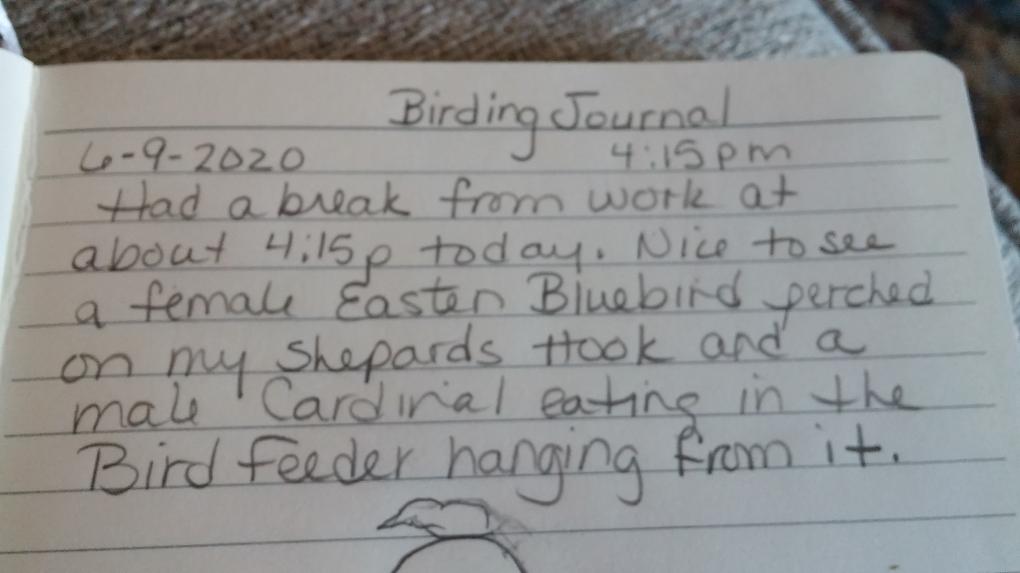
![20200609_161815[1]](https://academy.allaboutbirds.org/wp-content/uploads/hm_bbpui/712989/T2ku6pg488zufqbh20bw8h4m8idlrh9tj.jpg)
 My visual survey of this spot (a spot my wife saw while walking) suggested the normal bunch of white ibis with with a spot of pink in the back. This 300mm telephoto shot made the pink into a roseate spoonbill and showed a duck in the water. Expanding the image and using Merlin I saw the tricolor heron behind the spoonbill. Scanning other photos from that spot over the 15 or so minutes I found the duck out of the water and Merlin helped establish it was likely a female Green-winged Teal.
Before I started the course I had seen a lot of small birds in the large Live Oak outside my lanai. I had not been able to see much detail. But, I hadn’t scanned the images carefully enough. By looking for the best images, blowing them up a bit, enhancing lighting a bit and using Merlin, I found a Palm Warbler, a Yellow-rumped Warbler and a Great-crested Flycatcher. The Palm Warbler was really trying to hide as you can see below.
My visual survey of this spot (a spot my wife saw while walking) suggested the normal bunch of white ibis with with a spot of pink in the back. This 300mm telephoto shot made the pink into a roseate spoonbill and showed a duck in the water. Expanding the image and using Merlin I saw the tricolor heron behind the spoonbill. Scanning other photos from that spot over the 15 or so minutes I found the duck out of the water and Merlin helped establish it was likely a female Green-winged Teal.
Before I started the course I had seen a lot of small birds in the large Live Oak outside my lanai. I had not been able to see much detail. But, I hadn’t scanned the images carefully enough. By looking for the best images, blowing them up a bit, enhancing lighting a bit and using Merlin, I found a Palm Warbler, a Yellow-rumped Warbler and a Great-crested Flycatcher. The Palm Warbler was really trying to hide as you can see below. 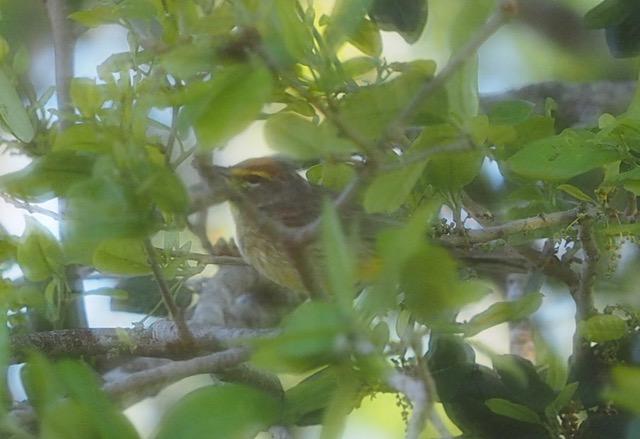 A final example was a couple weeks ago, a friend said I should come to his terrace to see all the Wood Storks 200 yards away on the edge of a golf course. They looked more like Ibis to me and my camera helped me establish that but I saw black birds which proved to be Reddish Egrets and a pair of ducks shown below
A final example was a couple weeks ago, a friend said I should come to his terrace to see all the Wood Storks 200 yards away on the edge of a golf course. They looked more like Ibis to me and my camera helped me establish that but I saw black birds which proved to be Reddish Egrets and a pair of ducks shown below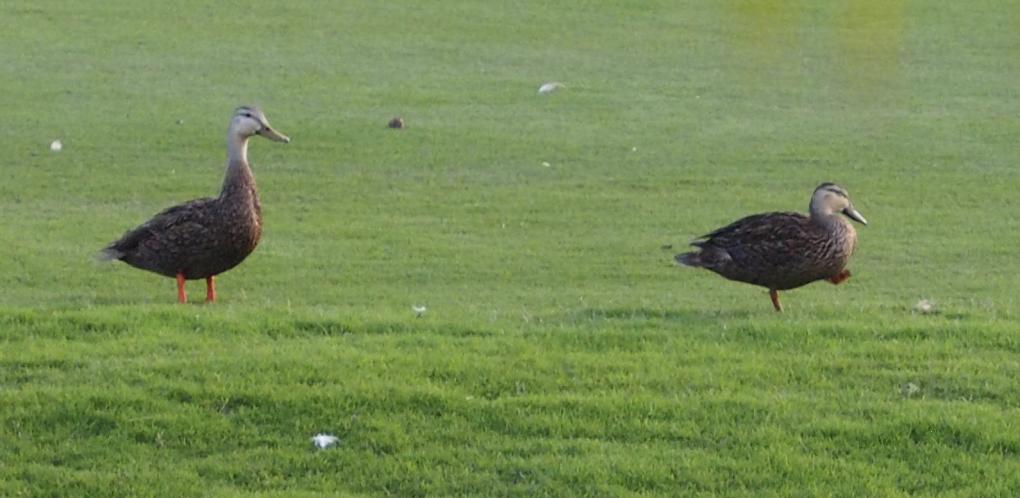 These were Mottled Duck males ID’d by Merlin.
My field notes will never be great. I probably won’t have a great life list, but I will take my telephoto and camera along whenever I go places. A little homework through ebirds and a glimpse of Merlin’s list of birds near me today will go a long way towards finding the name of more of those elusive creatures who fly so free.
These were Mottled Duck males ID’d by Merlin.
My field notes will never be great. I probably won’t have a great life list, but I will take my telephoto and camera along whenever I go places. A little homework through ebirds and a glimpse of Merlin’s list of birds near me today will go a long way towards finding the name of more of those elusive creatures who fly so free. 
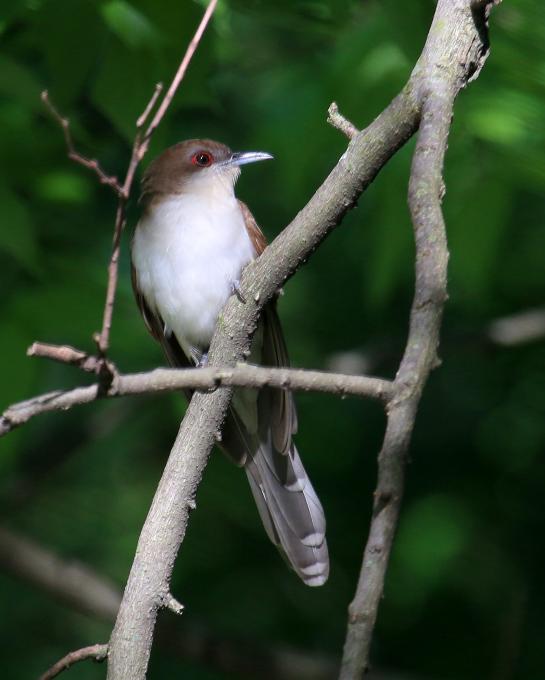
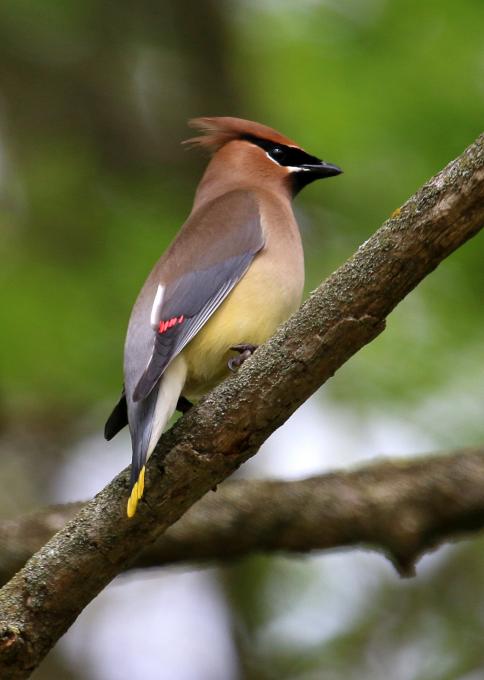

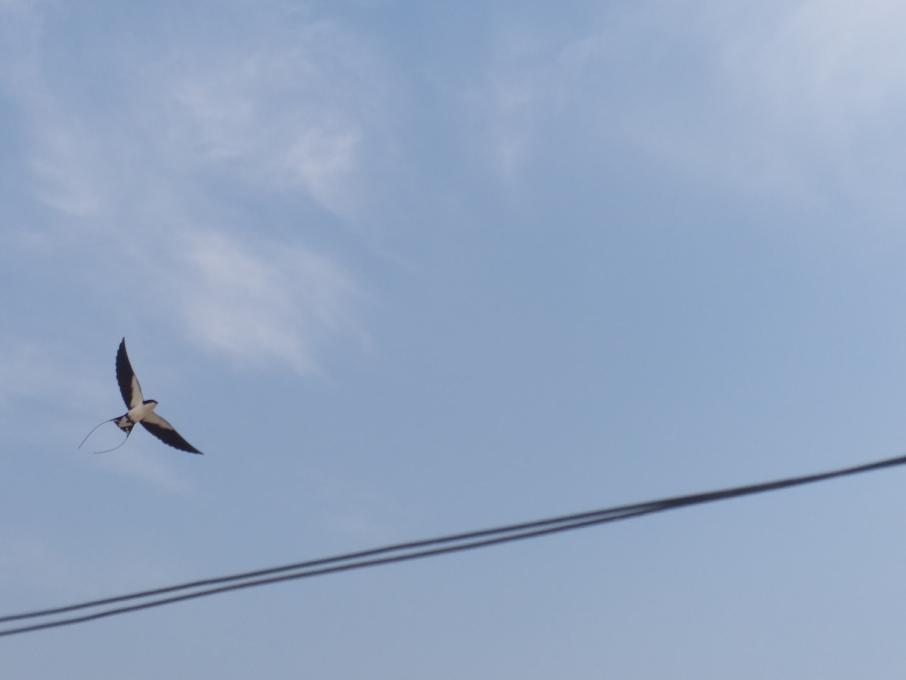 Swallows are small, with pointed narrow wings, wide and short tail, short bills, and small feet. Swallows spend much time in the air,flying all around quickly and capturing insects, they are most adapted to move fast and quickly. I found this beautiful bird in Delhi NCR, India. It takes many attempts to click a photo of a fast flier swallow. After studying the bird behaviour and its identification I came to know about this bird also. Keeping an eye on bird is very important to understand its behaviour. Morning time is best for bird watching. As a bird watcher it is important to keep patience as well as noticing bird and knowing its behaviour also requires patience. Wire tailed swallow is common here but as a first attempt it means a lot for me. It does not take straight flight, it takes sudden flight which is very impressive.
Bird watching is very interesting. Tracking birds and seeing them with binoculars is really a wonderful feeling. Wing Tailed Swallow flies in form of circle all around its area. Its small bill helps in feeding and long wings are useful for its flight.
Swallows are small, with pointed narrow wings, wide and short tail, short bills, and small feet. Swallows spend much time in the air,flying all around quickly and capturing insects, they are most adapted to move fast and quickly. I found this beautiful bird in Delhi NCR, India. It takes many attempts to click a photo of a fast flier swallow. After studying the bird behaviour and its identification I came to know about this bird also. Keeping an eye on bird is very important to understand its behaviour. Morning time is best for bird watching. As a bird watcher it is important to keep patience as well as noticing bird and knowing its behaviour also requires patience. Wire tailed swallow is common here but as a first attempt it means a lot for me. It does not take straight flight, it takes sudden flight which is very impressive.
Bird watching is very interesting. Tracking birds and seeing them with binoculars is really a wonderful feeling. Wing Tailed Swallow flies in form of circle all around its area. Its small bill helps in feeding and long wings are useful for its flight.